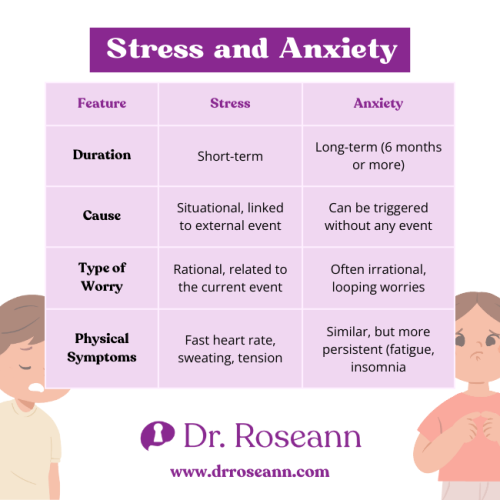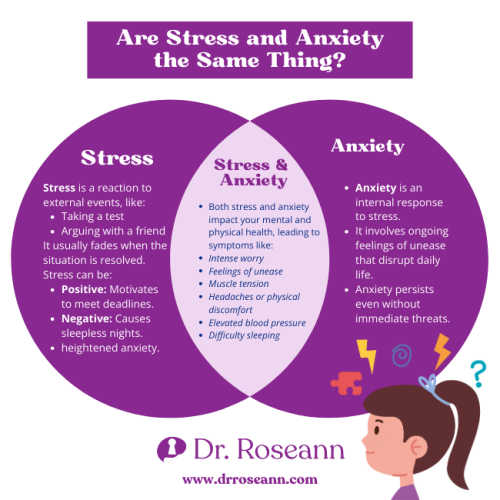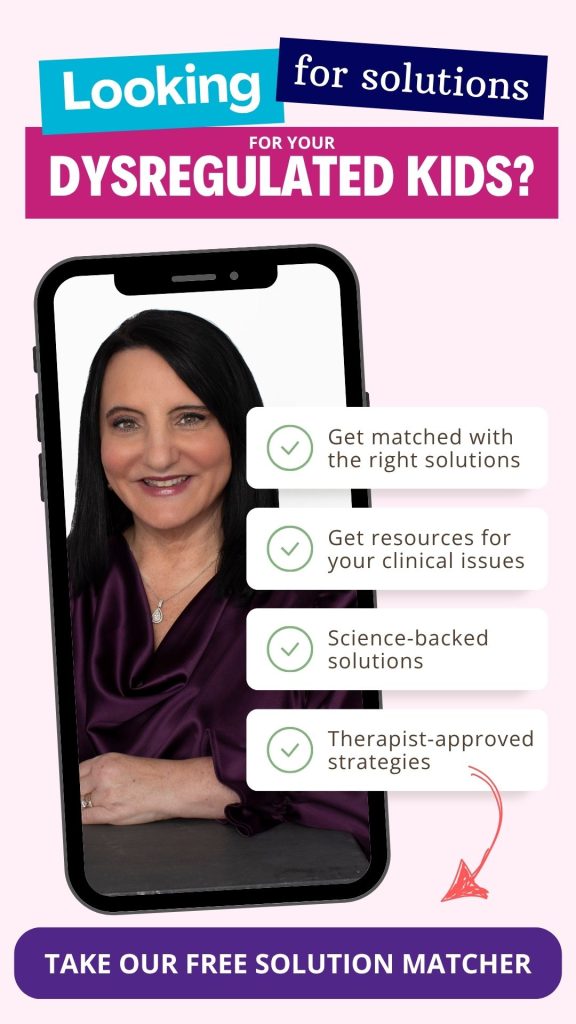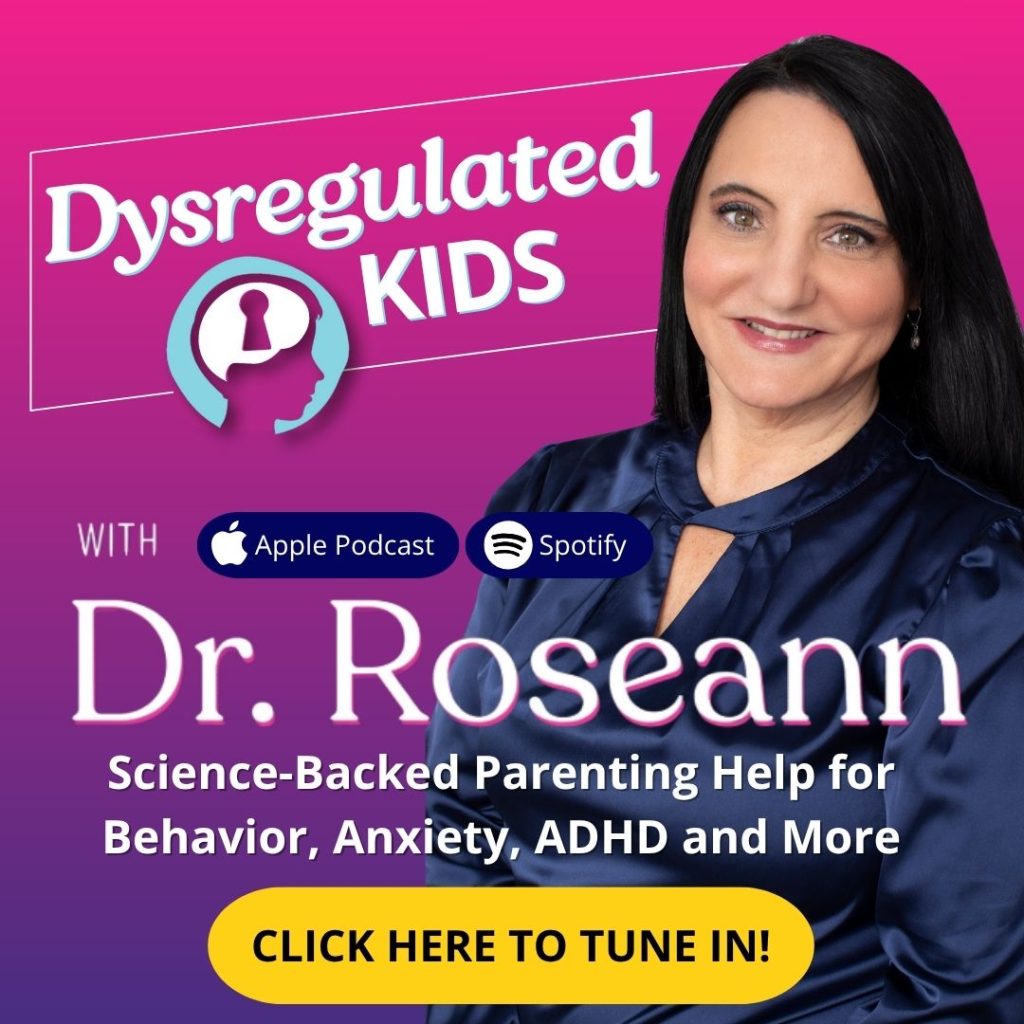Estimated reading time: 7 minutes
If you’re a parent, you probably know this feeling: your child is melting down before school, or they’re panicking about a recital, and you’re standing there wondering—> is this just stress, or is it anxiety?
It matters, because the two show up differently in kids, and knowing the difference helps us pick the right parenting tool in the moment, not throw the whole kitchen sink of strategies at them.

Difference Between Stress and Anxiety in Kids
Here’s the simplest way to think about it:
- Stress is a short-term reaction to something specific (like a math test, a new babysitter, or loud birthday party). Once that event is over, the stress usually fades.
- Anxiety sticks around. It’s a more persistent, future-focused worry that doesn’t always match the situation. Even when the “stressor” is gone, the worry keeps looping in their brain.
And here’s the kicker: when stress doesn’t get relief, it can morph into anxiety, leaving kids in a state of chronic overwhelm.
| Stress | Anxiety |
|---|---|
| Short-term and triggered by something specific | Long-lasting and often not tied to a clear event |
| Usually goes away when the situation ends | Lingers even after the event or trigger is over |
| Example: A child worried about a spelling test that morning but feels fine afterward | Example: A child who worries every night about failing school, even when no test is coming |
| Can actually motivate kids to practice, prepare, or problem-solve | Often paralyzes kids and makes them avoid things they once enjoyed |
| Shows up as headaches, stomachaches, meltdowns tied to a situation | Shows up as constant restlessness, sleep problems, and “what if” worries that don’t stop |
Parent Takeaway:
Stress is like a wave, it rises, it crashes, and it settles. Anxiety is more like a constant tide, always there, wearing them (and you) down.
When you understand the difference, you can respond with calm instead of confusion.

Can Big Feeling (Sensory Overload) Feel Like Anxiety?
Absolutely and if you’ve ever watched your child crumble in a noisy cafeteria or melt down under fluorescent lights, you know exactly what this looks like.
For many kids who are already dysregulated or highly sensitive, sensory overload can hit like a tidal wave.
Their nervous system takes in every sound, every flicker of light, every movement around them—and instead of filtering it out, their brain processes it all at once. That overwhelm doesn’t just cause stress at the moment… It can look and feel just like anxiety.
- A classroom feels “too loud” → your child covers their ears and refuses to go in.
- A crowded birthday party → they cling to you, saying their stomach hurts.
- Bright lights in a store → they lash out, then cry afterward.
When a child’s nervous system is stuck in overdrive like this, the line between stress and anxiety blurs. What starts as sensory overwhelm can mimic anxiety and over time, even fuel it.
How Long Should a Typical Stress Last Before It’s a Concern?
Stress is meant to be temporary, it flares up, then fades once the trigger is gone.
For example, your child might be nervous before a test or grumpy after a tough day, but by the next morning they’re back to their usual self. That’s stress doing its job.
But when the reaction lingers, hours after the event, into the next day, or with no clear reason at all, it may be shifting into anxiety. That’s when the brain isn’t letting go of the worry, even though the stressful moment has passed.
Some red flags to watch for:
- Persistent worry that doesn’t match the situation
- Sleep troubles, like trouble falling asleep or frequent nightmares
- Ongoing physical symptoms such as headaches, stomachaches, or feeling “sick” with no medical explanation

Emotional and Physical Signs of Anxiety, Not Stress
Anxiety in kids often sneaks in quietly, it isn’t always loud panic attacks or obvious fear. Many times, it shows up in everyday ways that leave parents second-guessing: Is this normal stress, or something more?
Unlike stress, which usually fades once the situation passes, anxiety tends to stick around and spill over into different areas of life. It can show up both emotionally and physically:
| Emotional Signs of Anxiety | Physical Signs of Anxiety |
|---|---|
| Persistent, looping worry that won’t let go | Frequent stomachaches or headaches without clear cause |
| Irritability or emotional outbursts over small things | Trouble sleeping or restless nights |
| Clinginess or avoiding everyday events (school, activities, friends) | Racing heartbeat, sweaty palms, or muscle tension |
| Difficulty calming down, even with reassurance or logic | Feeling shaky, tired, or “on edge” most of the time |
How Regulating The Nervous System Can Help
When our kids are spinning out, it’s tempting to jump right into correcting the behavior—> “Stop yelling!” “Calm down!” But here’s the truth: a dysregulated brain can’t listen, reason, or learn. That’s why we always start with calming the nervous system first. Once the brain feels safe, then you can guide behavior.
Instead of just saying, “Take a deep breath,” try sensory-friendly tools that meet kids where they are:
- Belly breathing through a straw → slows the breath in a fun, concrete way.
- Five-sense grounding → have them name something they see, hear, feel, smell, and taste to anchor their brain back to the present.
- Gentle movement or stretching → helps release pent-up energy when sitting still feels impossible.
- A low-stimulus “rehub” zone at home → create a cozy, predictable space (like a beanbag with soft lighting) where your child can retreat and reset.
- Validation before logic → try: “I see you’re overwhelmed. That must feel really hard.” Kids need to feel understood before they can hear solutions.
- Consistency and routines → predictable rhythms signal safety and activate the parasympathetic “rest and digest” system
When To Seek Extra Support
If your child’s worries start getting in the way of sleep, school, friendships, or just enjoying life, it may be time to bring in some extra help.
Where to turn:
- Therapists trained in emotional regulation, sensory support, or trauma.
- Occupational therapists who can offer sensory-friendly strategies that make daily life easier.
- Support for you, too. When parenting stress feels heavy, remember—your nervous system affects theirs. Getting help for yourself is part of helping your child.
Parent Takeaway: You now know how to spot the difference between stress and anxiety, recognize the signs in your child, and calm the brain before chasing behavior. Parenting a dysregulated kid isn’t easy—but you’re showing up with brave, brain-based love. And that’s exactly what your child needs most.
Parent Action Steps:
FAQs
How can I tell if my child’s jitters are stress or anxiety?
If they fade after the trigger, it’s likely stress. If they linger—even without a clear cause—it’s more likely anxiety.
Are physical symptoms always anxiety?
Not always—but recurring symptoms like tummy aches or sleeplessness without obvious cause often suggest anxiety.
Can stress turn into anxiety?
Yes. When stress becomes chronic or overwhelming without relief, it can settle into lasting anxiety.
Citations
Cervin, M. (2022). Sensory processing difficulties in children and adolescents with obsessive–compulsive disorder and anxiety disorders. Frontiers in Psychiatry, 13, 995313. https://doi.org/10.3389/fpsyt.2022.995313
Paulus, F. W., Ohmann, S., & Popow, C. (2021). Emotional dysregulation in children and adolescents: Developmental aspects and clinical implications. Frontiers in Psychiatry, 12, 628252. https://doi.org/10.3389/fpsyt.2021.628252
Jaicks, C. C. D., Kondru, R. K., Yedavalli, V. S., Alahari, S., Pothuru, P., & Reddy, P. (2024). Evaluating the benefits of occupational therapy in children with autism spectrum disorder using sensory integration therapy. Cureus, 16(6), e62913. https://doi.org/10.7759/cureus.62913
Dr. Roseann Capanna-Hodge is a licensed mental health expert that is frequently cited in the media:
- Today How to keep your kids physically and mentally afloated
- Little Sleepies How to Practice Mindfulness with Your Kids
- Well + Good The Best Lego Sets for Adults To Unleash Creativity and Practice Mindfulness
Disclaimer: This article is not intended to give health advice and it is recommended to consult with a physician before beginning any new wellness regime. *The effectiveness of diagnosis and treatment vary by patient and condition. Dr. Roseann Capanna-Hodge, LLC does not guarantee certain results.
Are you looking for SOLUTIONS for your struggling child or teen?
Dr. Roseann and her team are all about science-backed solutions, so you are in the right place!
Manage Anxiety, reclaim joy and restore peace in your home
©Roseann Capanna-Hodge










